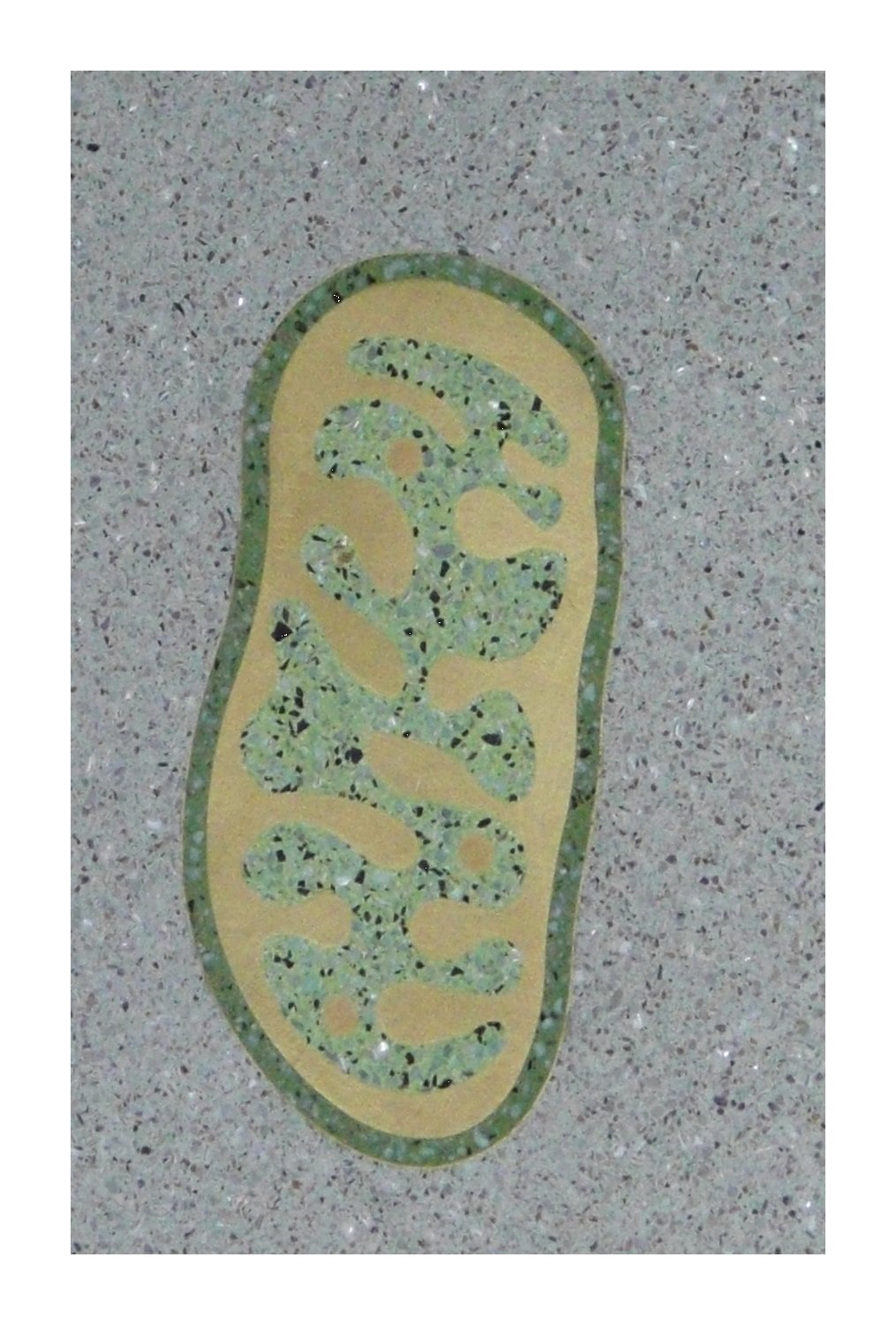Newsletter of the Department of Biological Science, Florida State University
Number 8, Winter 2009
Budget Difficulties
As a result of cuts to the university's budget, we may be unable to produce a printed version of this newsletter for mailing.
Table of Contents
New Beginnings
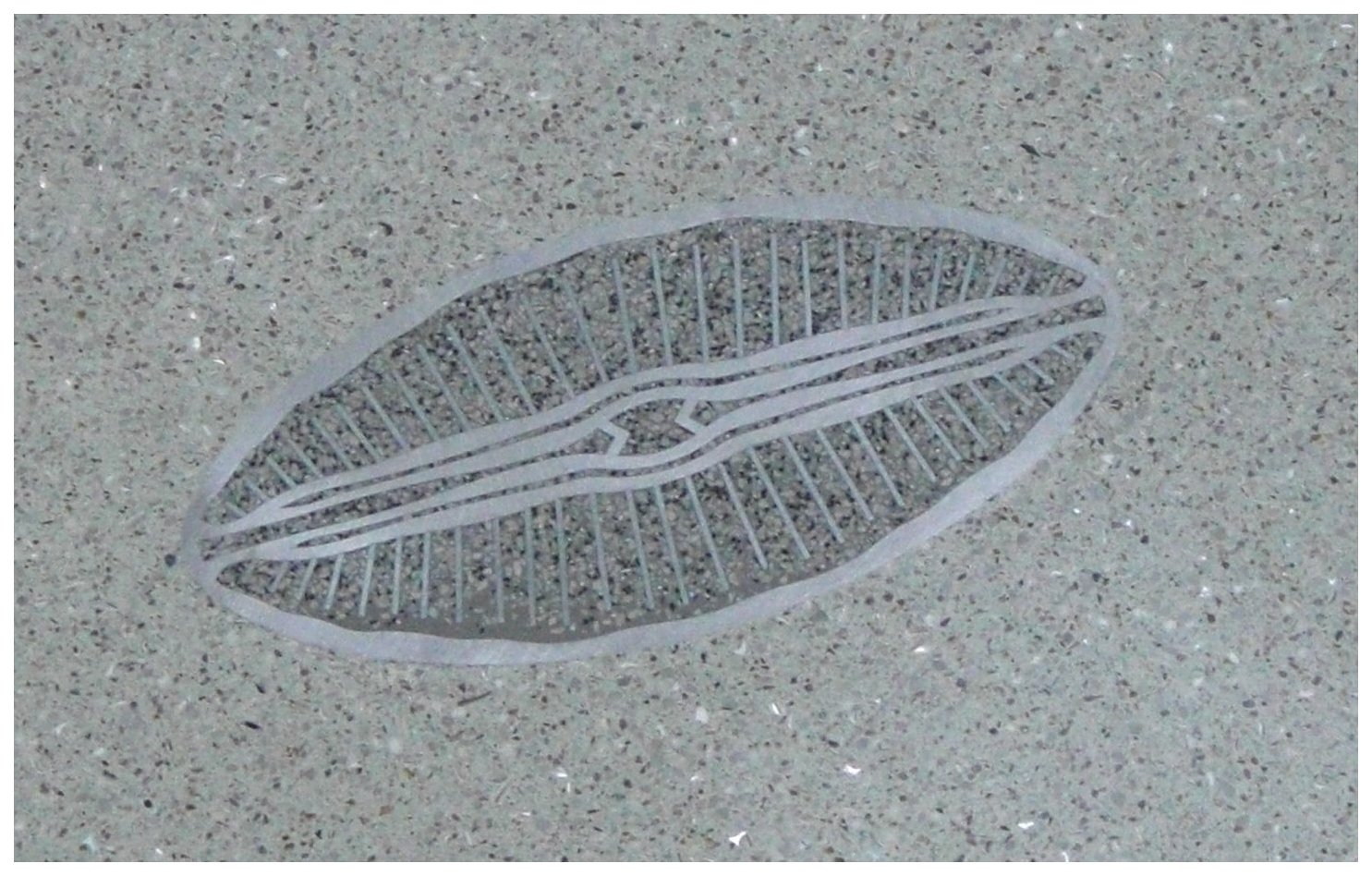
The Department of Biological Science has seen many, many new beginnings this year. First and foremost, during the early spring of 2008, we vacated Conradi and moved into the James E. "Jim" King Life Sciences Building, located at 319 Stadium Drive, immediately south of the College of Medicine. Its four floors house an auditorium, a 30-person conference room with two smaller "break-out" rooms, several 12-person conference rooms, the department's stockroom, the graduate and undergraduate advising offices, a study center for majors, the Office of Science Teaching Activities suite, two computer labs, a computer classroom, all of the department's administrative offices (except for a one-person "outpost" in Biology Unit I), a large portion of the department's shared analytical labs, and laboratory and office spaces for about 30 faculty members, plus their students and postdoctoral associates. Four greenhouses are aligned on the roof, enjoying unobstructed southern exposure. A catering kitchen facilitates receptions, and a comfortable and attractive open seating area is provided where students can congregate between classes. A scattering of smaller seating nooks with tables and whiteboards, as well as break rooms with refrigerators and microwaves, encourages informal interactions and lunch-time discussions. The photos here show details from the stone and metal mosaic floor in the lobby, which incorporates many biological motifs.

A celebratory ribbon-cutting was held on 4 April, then a more formal dedication took place 12 September, at which state senator Jim King himself was the guest of honor. The ceremony was attended by many university and legislative dignitaries and was followed by a reception and building tours.
New Chairman and Secretary
On 5 May, our official moving day, and the day on which the bulk of the actual move took place, the department marked another new beginning--Professor P. Bryant Chase took up the department's chairmanship on the same day his new secretary, Diane Pealor, started work. Academics often joke that replacing a department chairman and his secretary at the same time is a recipe for chaos, even without the major undertaking of occupying a new building! Fortunately, both have handled the transition so well that order has reigned throughout the process.
The Cluster Takes Shape
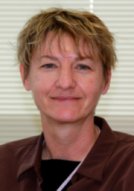
A third new beginning is the launch of the department's major Integrating Genotype and Phenotype initiative. Associate professor Kimberly A. Hughes, who joined the department last year, comes to us from faculty positions first at Arizona State University and then the University of Illinois. She earned her doctorate at the University of Chicago in evolutionary genetics. She works to understand the causes and consequences of genetic variation, mainly in fruit flies and guppies. Four more faculty members have been hired to join the cluster, two of whom are already at work in Tallahassee (see below, under Arrivals), and the search committee hopes to fill the remaining three (possibly four) positions this year.
New Equipment, New Capabilities
The department's shared analytical facilities have garnered funding for two major new capabilites. By overcoming tough competition to win a $2 million High-End Instrumentation grant from the National Institutes of Health, FSU has been able to acquire a state-of-the-art robotic cryo-electron microscope. When the 16-foot, 1.7-ton "Titan Krios" is in place, it will be only the second working installation of such an instrument in the world; the other is in Germany. Three of the five collaborators on the successful proposal are members of Biological Science: Professors Kenneth A. Taylor, Kenneth H. Roux, and Thomas M. Roberts. The department has secured permission to hire another faculty member in cryoelectron micrscopy (despite a widespread hiring freeze), and interviews will be conducted this winter.
In addition, the department has recently acquired a Roche Nimblegen microarray system and has become the first official Nimblegen-certified microarray site in the world. A microarray, in its simplest form, is an array of dots of DNA arranged on a slide; each dot corresponds to a particular gene. (For an organism whose entire genome has been sequenced, a microarray can be produced that includes a dot for every gene coded in its DNA.) When the content of a cell is spread over the microarray, the various messenger RNAs it contains base-pair with their DNAs, marking the genes to which they correspond. In other words, the pattern of the pairing on the microarray reveals a "snapshot" of just which genes were being expressed in that cell at that time—the cell's gene-expression profile. The resulting ability to determine the level of expression of an entire array of genes—in some cases organisms' entire genomes—simultaneously in the same sample has myriad applications in the biological sciences, from clinical prediction to ecosystem monitoring, quantitative gene mapping, and dissection of evolutionary mechanisms. The Nimblegen system will, of course, permit our analytical labs to produce gene expression profiles faster and with greater precision than ever before, but its versatility will permit many additional applications. Investigators will be able to detect the presence of target genes, whether they are expressed or not, to match transcription factors to the genes that they turn on or off (and even to the particular part of the gene to which they attach themselves), in fact to work out virtually any interaction between an organism's genome and the chemical environment within the cell. This powerful new system is expected to facilitate greatly the work of the department's initiative to integrate genotype and phenotype.
Special Events
In memory of Kathleen Craddock Burks, whose untimely death was announced in the 2007 issue of this newsletter, her colleagues at the Florida Department of Environmental Protection spearheaded a drive to raise money for a memorial. As a result, a grouping of native plants marked with a memorial plaque was dedicated on 13 June 2008. The planting is located on the south side of Biology Unit I, near the herbarium, and will continue to grow in beauty over the years.
In November of 2008, Strozier Library Special Collections displayed a collection of "Diatomscapes," electron micrographs of the complex and beautiful silica shells constructed by marine diatoms, by long-time departmental associate and courtesy scholar/scientist A. K. S. K. Prasad.
Arrivals and Departures
Professor Robert H. Reeves retired this year. Dr. Reeves first served FSU as an assistant professor of chemistry from 1971 through 1977. He then returned to FSU, after a stint at the University of Tennessee, as an associate professor in the Department of Biological Science, where he served as the director of the Program in Medical Sciences from 1979 to 1992 and thereafter as Associate Chair for Undergraduate Studies from 1999 until his retirement.
In addition, Dr. Peter Beerli and Dr. Gavin J. P. Naylor left Biological Science to join the newly formed Department of Scientific Computing, successor to the School of Computational Science.
Four new faculty members joined the department this year, two (McGinnis and Rokyta) as part of the Integrating Genotype and Phenotype initiative and two (Jones and Lemmon) "independently."
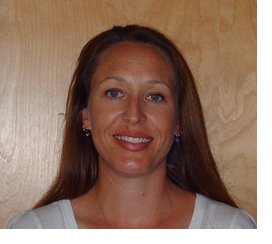
Assistant professor Karen M. McGinnis received her Ph.D. from Arizona State University and then did postdoctoral work at the U.S. Department of Agriculture and the University of Arizona before joining our faculty. Her long-term goal is to understand how identical genomic sequences can be interpreted to cause distinct expression patterns and phenotypes, and her principal study organism is maize.
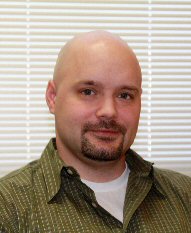
Assistant professor Darin R. Rokyta got both his doctoral and his postdoctoral training at the University of Idaho. He investigates the molecular and statistical properties of adaptive evolution. His overarching goal is to develop a robust, quantitative model of adaptive evolution at the molecular level and the statistical methology to test the model predictions and assumptions, but he also works at generating the empirical data sets needed to evaluate the strengths and weaknesses of current models.

Assistant professor Kathryn M. Jones studies fundamental questions about rhizobial/plant symbiotic interactions and is excited about the possibilities of new model organism Medicago trunculata (a small legume similar to alfalfa). She hopes to discover fundamental insights into how bacteria invade and survive within eukaryotic cells, as part of the botanically and agriculturally important nitrogen-fixing symbiosis. She got her doctoral training at the University of Chicago.
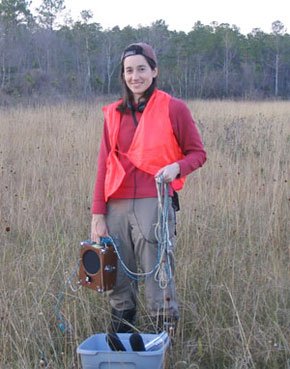
Assistant professor Emily C. M. Lemmon's goal is to gain insight into the process of speciation in order to understand the origin of biodiversity. She works principally with the biology (including behavioral ecology, phylogenetics, phylogeography, population genetics, genomics, and ecology) of amphibians, specifically chorus frogs. Her doctorate is from the University of Texas, Austin, and her postdoctoral work was carried out at the University of California, Davis.
Finally, Katarzina (Kasia) Chodyla, Kevin Dixon, and Trisha Spears have joined the department's teaching faculty. Kasia got her degree in environmental biology/ecology at Adam Mickiewicz University in Poznan, Poland. After coming to Tallahassee in 1993, she worked in a variety of faculty research labs in the department before stepping up this year to replace Jane Reeves as Microbiology Laboratory Coordinator. Kevin graduated from Brock University in his home town of St. Catharines, Ontario, then earned his master's at the University of Oklahoma and his Ph.D. at the University of Chicago. He then collected a wealth of college-level teaching experience at a number of institutions in the U.S. and Ecuador before coming to Tallahassee this year. In his new position as lab director, he will administer and develop curriculum for core labs for biology majors, as well as teaching in both BSC 1005 (for nonmajors) and several courses for biology majors. Trisha earned her Ph.D. in the laboratory of Dr. Lawrence G. Abele, here in the Department of Biological Science. She then stayed on to manage his laboratory before accepting a teaching post this year. She will also teach courses for biology majors.
2008 Faculty Awards
Associate professor Hank W. Bass was named the 2007-08 Honorary Professor of the Year by the FSU chapter of the Beta Beta Beta Honorary Society.
Dr. Felicia C. Coleman (Ph.D. 1991), Director of the Florida State University Coastal and Marine Laboratory, has received the third annual Dr. S.-Y. Hong Award for Outstanding Article in the journal Marine Resource Economics for her article (with Martin D. Smith and Junjie Zhang) entitled "Structural modeling of marine reserves with Bayesian estimation."
Professor Don R. Levitan has received the Office of Graduate Studies Outstanding Graduate Faculty Mentor Award.
Professor Joseph Travis, a Robert O. Lawton Distinguished Professor and currently serving as FSU's Dean of Arts and Sciences, has been named president-elect of the Board of Directors of the American Institute of Biological Sciences (AIBS), which has a combined membership of more than 250,000 scientists nationwide.
Student Awards
John Mark Caffrey Memorial Scholarship: Jeff Godbey (Tallahassee, Fla.), Chantal Garcia De Gonzalo (Pembroke Pines, Fla.), Qing Zhe Ni (Tallahassee, Fla.), and Kelly Preston (Brandon, Fla.). Faculty Undergraduate Endowed Scholarship: Megan Elios (Pembroke Pines, Fla.). Charles M. McAllister Endowed Scholarship: Katelyn Powell (Saginaw, Mich.) and Louis Frosch (Stuart, Fla.). Biological Science Alumni Endowed Scholarship: Maggie Shoemaker (Tallahassee, Fla.) and Amanda Novak (Jacksonville, Fla).
Four undergraduates received scholarships from the Beta Beta Beta Honorary Society to attend its National Convention: Michael Henderson (D. Fadool lab, Biological Science/Neuroscience; Keystone Heights, Fla.), Priscella Givens (Cappendijk lab, College of Medicine/Neuroscience; Tallahassee, Fla.), Kate Beckham (Bass lab, Biological Science; Pace, Fla.), and Kevin Meyer (Steinback lab, Mathematics/Computational Biology; Port Charlotte, Fla.), and three received Johnson awards for their posters. Mr. Henderson received the second place in Cell and Developmental Biology; Ms. Beckham received third place in Cellular and Molecular Biology, Division I; and Mr. Meyer received the corresponding third place in Division II.
Margaret Menzel Endowed Award: John Poulton (West Palm Beach, Fla.), Casey terHorst (Los Angeles, Calif.), and Kristal Tucker (Linden, Tenn.). Brenda Weems Bennison Memorial Scholarship: Kathleen Lotterhos (Romulus, N.Y.) and Andres Plata Stapper (Bogota, Colombia). The Robert B. Short Scholarship in Zoology: Thomas Mast (Ashland, Oh.). The Robert K. Godfrey Scholarship: Elise Gornish (Queens, N.Y.) and Tania Kim (Montreal, Ont., Canada). The Graduate Student Publication Award: Junjie Lu (Shijiazhuang, Hebei, China) and Matt Schrader (Indialantic, Fla.). The Jack Winn Gramling Research Award in Marine Biology: Nicole Fogarty (Dayton, Oh.).
News from Alumni
Visit the newsletter website, http://www.bio.fsu.edu/newsletter/feedback.php, for the full stories and original wording.
1970s
James E. Hall III, B.S. 1969, grad school 1970: I was a student in the Department of Biological Science during the latter '60's until 1970. I received a B.S. in Bio. Sci. in 1969 and entered graduate school as a student of molecular genetics under Dr. A. Gib DeBusk, whom I admired and disappointed. I didn't continue my graduate studies because of personal issues that had to be resolved, as I explained to him, but eventually used my biology training later in 1971 to attend an internship in Medical Technology, which I've been involved in for the last 37 years. Currently, I have certification as a Histocompatibility Technologist and work in an HLA laboratory at Children's Memorial Hospital in Chicago, still going strong at the age of 61. Our laboratory specializes in sequencing the DNA controlling the HLA protein structure to obtain donor and recipient HLA-typing information for transplants (solid organ and stem-cell/bone marrow). We've discovered quite a few new HLA alleles, since we provide our services to the Argentine bone marrow registry, which serves an extremely heterogeneous population; consequently, I've participated in writing several papers related to these new alleles. The professors who guided me and inspired me most were Drs. Loretta Ellias, Gib Debusk, Robert Short, Mary Noka Hood, and a graduate student of Dr. Debusk whose name I don't recall, but who defended his dissertation in English and French, a feat that astounded me then. I would love to return to revisit FSU, but would probably not recognize anything but the oldest areas of the campus. My best wishes are extended to the professors mentioned above.
Amy Gilboy Meide, B.S. 1997: After graduating cum laude in 1997, I volunteered with various ornithological organizations, such as the Atlantic Bird Observatory in Nova Scotia, Canada. From 1999 through 2001, I was a U.S. Peace Corps Volunteer in the Philippines, working on coastal resource-management issues. After the Peace Corps, I got my M.S. in Resource Ecology and Management from the School of Natural Resources and Environment at the University of Michigan, and I'm currently employed as the Land Management Coordinator for St. Johns County, Florida. This year, I was one of only 40 people selected from competitors nationwide for the TogetherGreen Conservation Leadership Program, part of a new conservation initiative of the National Audubon Society with support from Toyota. Fellows receive specialized training in conservation planning and execution, the chance to work and share best practices with gifted conservation professionals, and assistance with project outreach and evaluation. Each Fellow will also receive $10,000 towards a community-focused project to engage local residents in conserving land, water and energy, and contributing to greater environmental health. I plan to focus my efforts on improving and restoring habitat on the publicly owned St. Johns County Golf Club. With the help of volunteers, I hope to improve natural habitat for threatened and endangered animals, including eastern indigo snakes, wood storks, and bald eagles, on 3 acres of "no play" zones along the course. The ultimate goal is eventually to restore 25 acres, and this fellowship is the first step.
Michael G. Peterson, B.S., 1967; M.S. 1970: I'm recently retired from 30 years in the medical business (cardiac pacemakers and implantable defibrillators) and now living in the mountains of NW Montana, though we still have a vacation home in Florida. My most influential professor and friend was Anne Pates, but after graduation with my masters in bacteriology (under her guidance), I lost track of her. Congrats on the new building. Lots of fond memories at Conradi.
1990s
Kimble Frazer, B.S. 1991: I am one in a long line of FSU graduates (one of my grandmothers, both my parents, and three younger siblings all got their degrees at FSU), so it will always hold a special place in my heart. I got my first start in research at FSU, and the didactic and practical knowledge I received there has served me well over the years as I've built my own budding biomedical research career. I graduated with a degree in Biological Science from FSU in 1991. While at FSU, I did immunology research with Dr. Ken Roux there. I then joined the Medical Scientist Training Program (MSTP; an NIH M.D./Ph.D. training program) at UT Southwestern in Dallas, TX. I did my first two years of medical school at UTSW, as well as most of my graduate schooling there. While I was still in graduate training, my mentor moved to become director of the Oklahoma Medical Research Foundation in Oklahoma City, and I moved with him. I received my Ph.D. in immunology from UTSW in 1998 and transferred to the University of Oklahoma to complete medical school, receiving my M.D. in 2000. I then moved to Salt Lake City, UT to complete my residency in pediatrics at the University of Utah. Following residency, I did fellowship training in pediatric hematology-oncology also at the University of Utah, finishing in 2005. During fellowship, I did research on RNAi and epigenetics in the laboratory of Dr. Bradley Cairns, an HHMI lab here at the University of Utah's Huntsman Cancer Institute. After finishing the fellowship, I joined the University of Utah's faculty as an Instructor in Pediatrics. During this time, I changed my scientific focus somewhat, and since late 2006 I have been using zebrafish to study T cell leukemias and lymphomas, and the epigenetic changes that distinguish them from benign lymphocytes. In 2007, I accepted an Asst. Professor position within the Dept. of Pediatrics, as well as an adjunct appointment within the Dept. of Oncological Sciences. I currently work in our Division of Pediatric Hematology/Oncology to provide clinical care at the University of Utah, as well as working on the research enterprise described above at the Huntsman Cancer Institute.
The Real BioFeedback
Please let us know what you're doing now and how you've passed the time since you left Florida State. Please don't let space limit you. Add more sheets or send an e-mail. Did you respond last year? Feel free to send an update! If you can include a financial contribution as well, it would help the department to maintain it's quality in the face of the current fiscal crunch, but we would be delighted just to hear from you. Be sure to let us know whether we can post your remarks on our website and/or include excerpts in the next issue of BioFeedback. Thank you!
Editorial board: Anne B. Thistle (chair, thistle@bio.fsu.edu), Diane Pealor (jtfalcon@bio.fsu.edu), and Judy Bowers (bowers@bio.fsu.edu).


